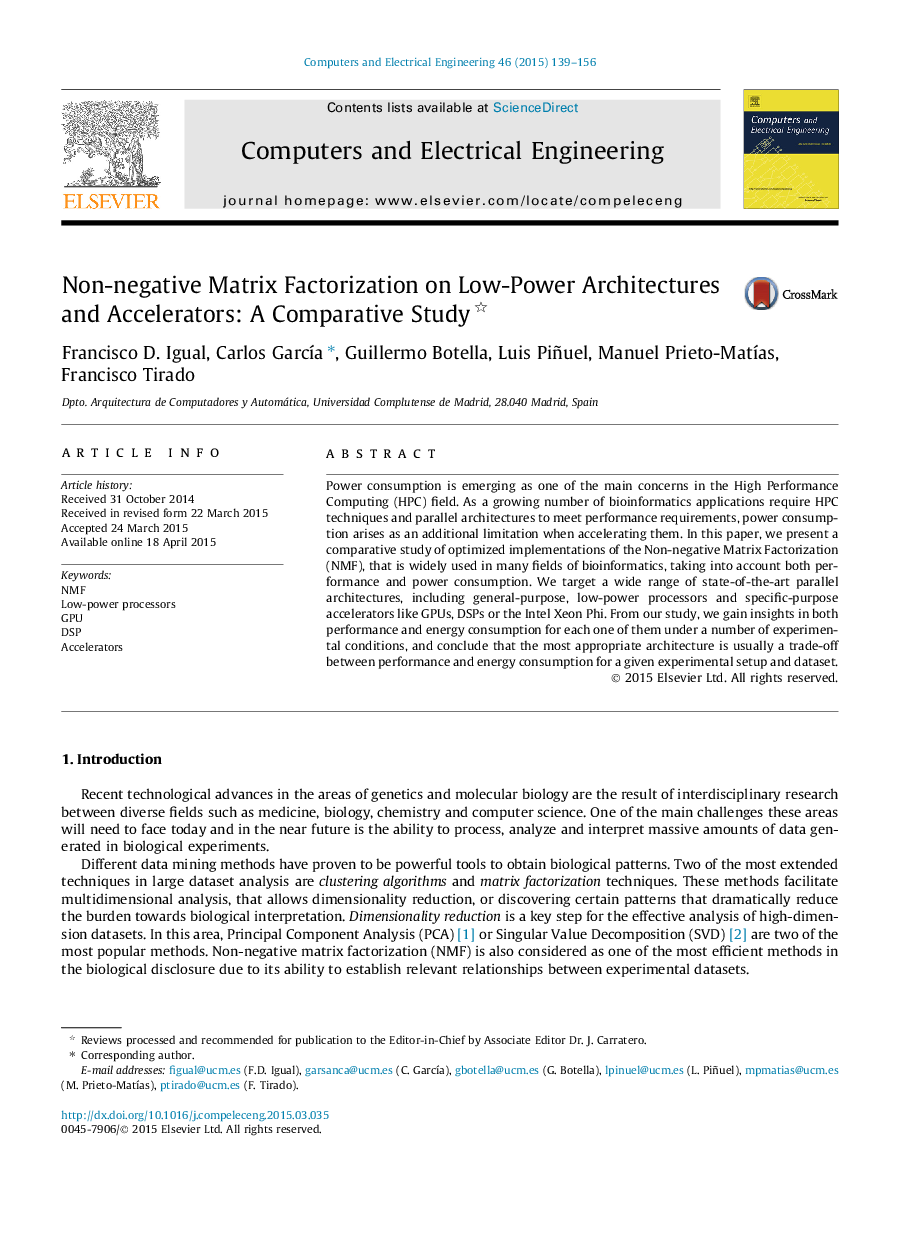| Article ID | Journal | Published Year | Pages | File Type |
|---|---|---|---|---|
| 455227 | Computers & Electrical Engineering | 2015 | 18 Pages |
•Performance and energy consumption study of NMF is performed on different systems.•General-purpose CPUs yield better execution times at the cost of high energy rates.•Low-power architectures offer better trace-off in energy and performance.
Power consumption is emerging as one of the main concerns in the High Performance Computing (HPC) field. As a growing number of bioinformatics applications require HPC techniques and parallel architectures to meet performance requirements, power consumption arises as an additional limitation when accelerating them. In this paper, we present a comparative study of optimized implementations of the Non-negative Matrix Factorization (NMF), that is widely used in many fields of bioinformatics, taking into account both performance and power consumption. We target a wide range of state-of-the-art parallel architectures, including general-purpose, low-power processors and specific-purpose accelerators like GPUs, DSPs or the Intel Xeon Phi. From our study, we gain insights in both performance and energy consumption for each one of them under a number of experimental conditions, and conclude that the most appropriate architecture is usually a trade-off between performance and energy consumption for a given experimental setup and dataset.
